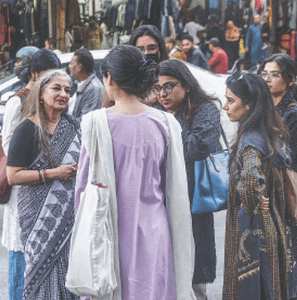
KARACHI: Her work of providing disaster resistant homes to the flood-affected people may have remained under the radar and unrecognised by her peers, many of whom continue to remain sceptical, 82-year-old Yasmeen Lari, Pakistan’s first woman architect, is being lauded abroad. Today, the Royal Institute of British Architects (RIBA) announced that she will receive the 2023 Royal Gold Medal for architecture.
Approved personally by King Charles III, in recognition of the humanitarian work, it will be officially presented to her in June.
“It is a great honour of course,” Lari told Dawn. At the same time, she said, it heralds a new direction in the practice of architecture. “I commend the RIBA for taking the lead to shift the focus from wealth and privilege to providing design services to the disadvantaged and the displaced, at the same time begin to heal the planet,” she added.
The medal Lari is receiving is for leading a quiet revolution that is taking place in many parts of Sindh where rural communities are rebuilding their mud houses, swept by the 2022 floods.
These homes look like traditional chauhras (round rooms with a conical thatched roof) the villagers are used to but are octagonal in shape and leave zero carbon footprint in the process of being built. In the last six months, Lari has been able to build 4,500 one-room homes, each costing Rs25,000. The number may be a drop in the ocean when two million houses that were damaged or destroyed (of which 75 per cent were made of mud) in Sindh alone need to be rebuilt. But when you compare this to none built, so far, by the government, it is no small feat.
If she adds more frills to the home, like a low-cost earthen stove, installation of a solar panel to light up an energy saver bulb in each of the dozen households who share it, an eco-latrine to be shared by two families and a hand-pump used communally by eight families, the cost increases to Rs43,000. This is still insignificant as most organisations also in the rebuilding phase estimate their brick, cement and steel one-room homes to cost nothing less than Rs300,000 each.
Using her design expertise and knowledge of local building technologies she is teaching them the skills to build their homes anew. These villagers will never have to depend on anyone — neither for dole outs nor for technical guidance in future.
Conscious of the fact that the industry she is associated with is responsible for nearly 40pc of global climate emissions, and acknowledging she has used some of the same material for many decades, before she retired from architecture in 2000, today she had made it her mission to guide the communities she is working with, to use indigenous, low-cost, and readily available building material — earth, husk, lime and bamboo — adding scientific knowledge to make these homes sturdy, so they can withstand the next climate catastrophe, which scientists say is imminent.
Published in Dawn, April 28th, 2023


































